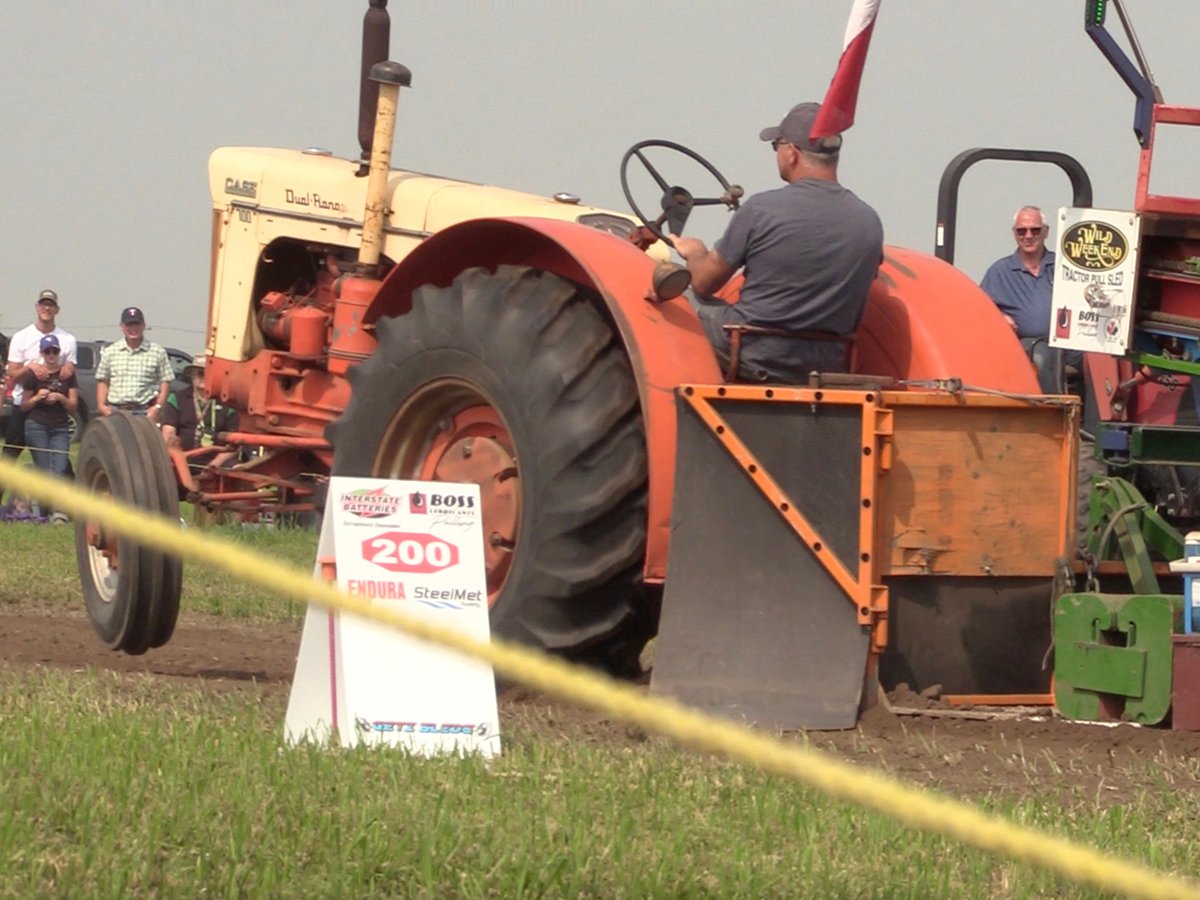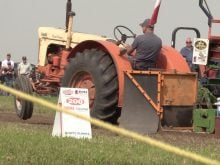BARRHEAD, Alta. – Sheep producers across the Prairies are selling their flocks and getting out of the business, but Ronald and Erna den Broeder are doing their best to buy more sheep.
The couple estimates it takes 850 ewes to make a viable sheep operation. They have 900 now and plan to reach 1,250.
When the couple was searching for an agriculture business to replace the veal calf contract that ended with Sunterra Meats after seven years, they looked at chickens, dairy and beef.
Chicken and dairy quota cost too much for the young farmers, and beef required more land. Then they looked at sheep.
Read Also

Vintage power on display at Saskatchewan tractor pull
At the Ag in Motion farm show held earlier this year near Langham, Sask., a vintage tractor pull event drew pretty significant crowds of show goers, who were mostly farmers.
“Sheep was a pretty good alternative,” said Ronald, who used a reverse cash flow analysis to see if the sheep would pay the bills.
“I knew my expenses. I needed to know how many animals were needed to make it work,” said Ronald, whose introduction to sheep was a few classes at an agricultural college in the Netherlands several years earlier.
In 2007, they bought their first flock of sheep, which turned out to be duds cloaked in wool. Almost every ewe needed help lambing. The couple was exhausted and wondered if they were making the right decision.
The next 200 practically lambed themselves and convinced the couple that sheep would be a viable alternative to raising veal calves. Barns built for housing the veal calves are used for lambing ewes year round. The next group of ewes begins lambing at the end of October and will continue until June.
By lambing throughout the year, the couple hopes to spread out the work and the cash flow and catch the peaks of the lamb market and bonuses by producing a uniform crop of lambs.
With more than half of the lamb consumed in Canada coming from outside the country and studies showing a growing appetite for Canadian lamb, Ronald believes the future is bright for lamb producers.
“We have been able to find a niche market,” he said.
As cash flow allows, the den Broeders are implementing more automated systems to reduce the workload. The sheep are fed silage with an automatic feed wagon and a new scale system automatically sorts the lambs and ewes by ear tag.
The software system for identifying and sorting sheep has also been beneficial for keeping track of the dairy calves still at the farm. At one time, Ronald gathered all the bull calves from 32 local dairies. Now he collects them from only two local dairy farms.
It is Erna and the children’s job to look after the incoming dairy calves until they’re six weeks old and moved outside the barn to a backgrounding pen. The calves will eventually be sold to a feedlot.
“I usually feed the bottle lambs because Ronald has no patience,” said Erna.
Both den Broeders grew up in the Netherlands; Erna on a dairy farm before moving to Neerlandia, Alta., with her family to continue dairy farming in Canada.
Ronald grew up in Amsterdam with only weekend camping trips to the country to give him a taste of rural life. In high school he met a friend with a farm and fell in love with farming.
“I really enjoyed it,” said Ronald, who worked on dairy farms in Ontario through exchange programs.
It was during an eight hour wait in the airport in Toronto that Ronald met a dairy farmer from Busby, Alta. He migrated west to work on that dairy farm, met Erna and they bought their own farm.
While raising sheep and dairy cattle is not easy, it’s where they want to raise their five children, ages two to 10.
















